Class 8 History Chapter 8 Important Question Answers - The Making of National Movement : 1870s-1947
Q1. Define Nationalism.
Ans: Nationalism is the feeling of unity and belonging among the people of a nation. 
It includes:
- A strong sense of patriotism.
- Principles that support national independence.
- The belief that a nation's resources and governance should benefit all its people, regardless of class, colour, caste, creed, language, or gender.
Q2. What were the factors that led to the rise of national consciousness among the people of India?
Ans: The rise of national consciousness among the people of India was influenced by several key factors: 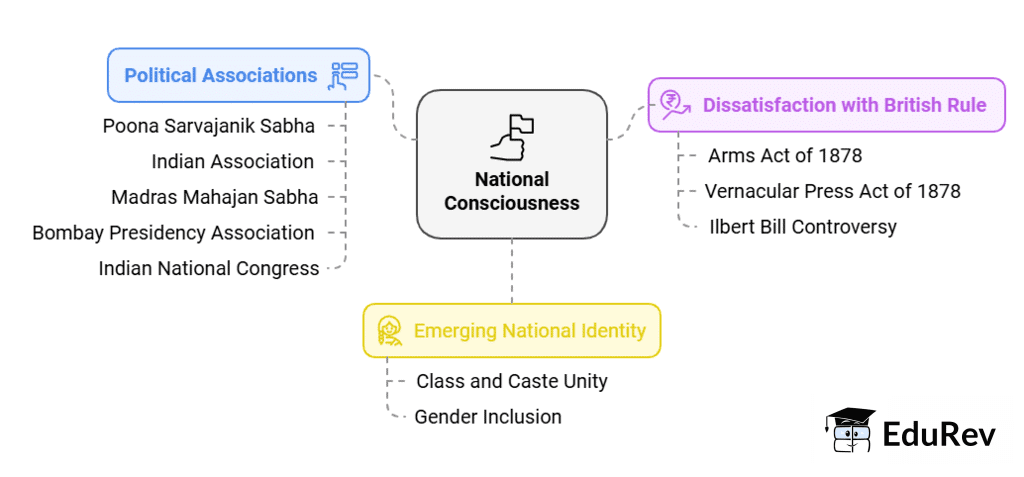
- Political Associations: In the 1870s and 1880s, various political groups emerged, primarily led by English-educated professionals, such as lawyers. Notable associations.
- Growing discontent was evident due to several laws that angered the Indian populace.
- The Arms Act of 1878 prohibited Indians from possessing arms. The Vernacular Press Act of 1878 aimed to silence critics by allowing the government to seize the assets of newspapers deemed "objectionable."
- The Ilbert Bill controversy in 1883, which proposed that Indian judges could try British individuals, was withdrawn after strong opposition from the British, highlighting racial discrimination.
Q3. Write a short note on Jallianwala Bagh?
Ans: The Jallianwala Bagh massacre took place on Baisakhi Day, 13 April 1919, in Amritsar. General Dyer ordered troops to fire on a large crowd of unarmed civilians, marking a brutal response to protests against the oppressive Rowlatt Act.
- The massacre was a reaction to widespread protests against the Rowlatt Act.
- Rabindranath Tagore renounced his knighthood in protest, voicing national pain and anger.
- The incident underscored the need for unity among Hindus and Muslims in the fight against British rule, as advocated by Mahatma Gandhi.
Q4. Mention the early leaders of Indian National Congress?
Ans: The early leaders of the Indian National Congress were:
- Dadabhai Naoroji
- Pherozeshah Mehta
- Badruddin Tyabji
- W.C. Bonnerji
- Surendranath Banerji
- Romesh Chandra Dutt
- S. Subramania Iyer
Q5. Which British officer helped in the formation of Indian National Congress?
Ans: A retired British official, A.O. Hume, significantly contributed to the formation of the Indian National Congress. His efforts included:
- Bringing together educated Indians from various regions.
- Facilitating discussions on national issues.
- Encouraging the establishment of a unified political platform.
Q6. Why were the early years of the Indian National Congress referred to as the moderate phase?
Ans: The early years of the Indian National Congress are known as the moderate phase due to the approach and goals of its leaders during this time. Key aspects of this phase include: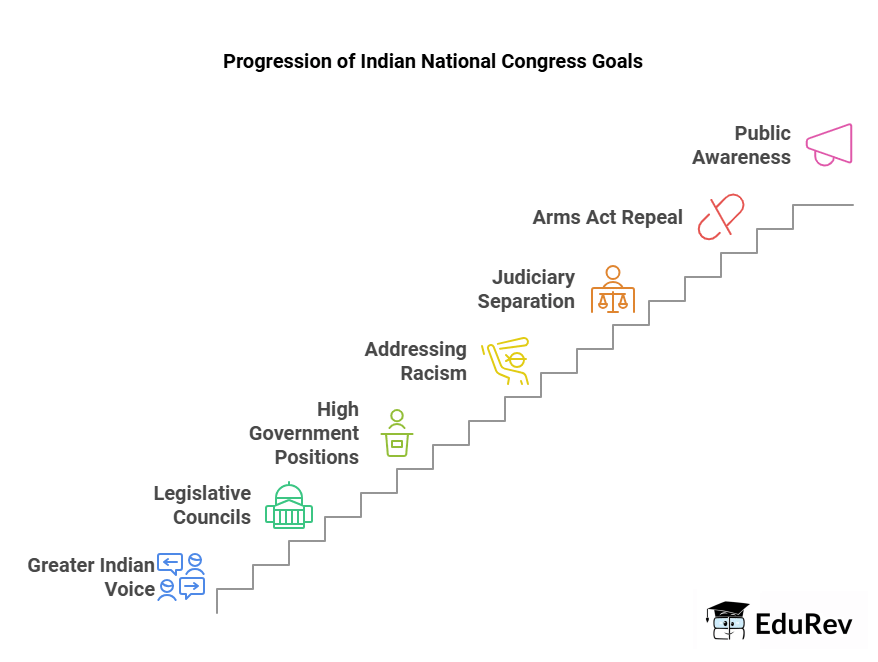
- The Congress aimed for a greater voice for Indians in government and administration.
- It sought to make Legislative Councils more representative and powerful, and to establish them in provinces without any.
- There was a demand for Indians to hold high positions in government, including calls for civil service examinations to be conducted in India.
- This movement aimed to address racism, as many important roles were held by British officials, who believed Indians were unfit for responsibility.
- Other significant demands included the separation of the judiciary from the executive, the repeal of the Arms Act, and the right to freedom of speech and expression.
Q7. What were the economic issues that were raised by the Indian National Congress in its moderate phase?
Ans: The early Indian National Congress raised several important economic issues during its moderate phase: 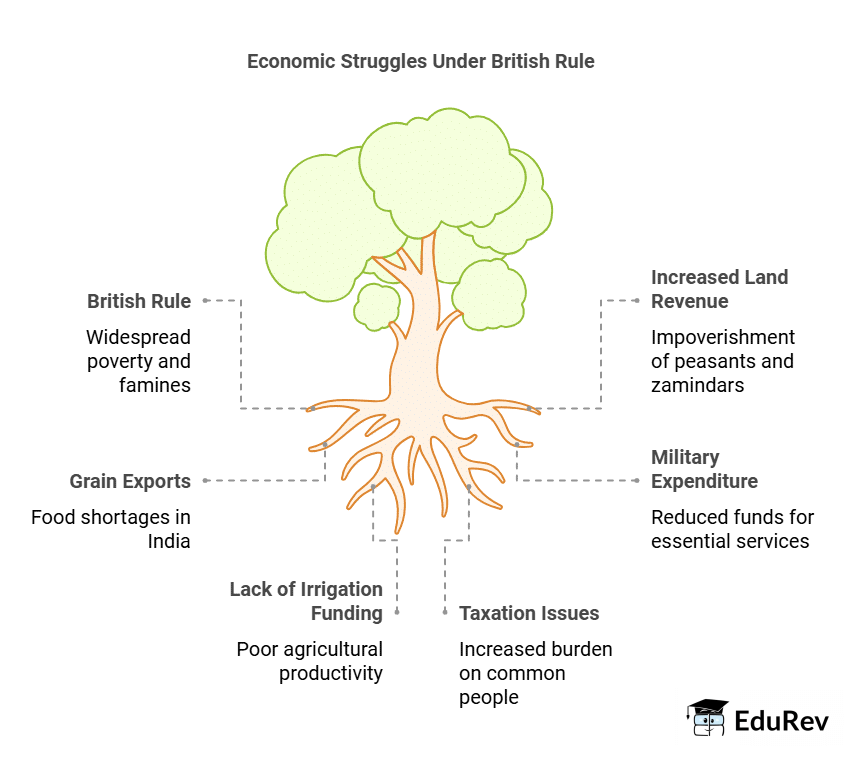
- It argued that British rule caused widespread poverty and famines.
- Increased land revenue led to the impoverishment of peasants and zamindars.
- Exports of grains to Europe resulted in food shortages in India.
- The Congress demanded a reduction in land revenue and military expenditure.
- It called for increased funding for irrigation projects.
- Resolutions were passed addressing the salt tax, treatment of Indian labourers abroad, and the struggles of forest dwellers.
Q8. Why was Bengal partitioned?
Ans: In 1905, Viceroy Curzon partitioned Bengal, which was then the largest province of British India, including Bihar and parts of Orissa. The British claimed the division was for administrative convenience, but this primarily served the interests of British officials and businessmen.
Key points regarding the partition:
- The government separated East Bengal and merged it with Assam.
- One of the main motives was to reduce the influence of Bengali politicians.
- The British aimed to divide the Bengali population, particularly separating Hindus from Muslims.
The partition sparked widespread anger across India, leading to:
- Opposition from all sections of the Indian National Congress.
- Large public meetings and demonstrations.
- The emergence of the Swadeshi movement, particularly strong in Bengal.
Q9. What was the result of the partition of Bengal?
Ans: The partition of Bengal sparked widespread anger across India. Key points include:
- All factions of the Indian National Congress, both Moderates and Radicals, opposed the partition.
- Large public meetings and demonstrations were organised, leading to new forms of mass protest.
- This struggle became known as the Swadeshi movement, which was strongest in Bengal and also resonated in other regions, such as Andhra, where it was called the Vandemataram Movement.
The British government justified the partition for reasons of administrative convenience, primarily benefiting British officials and businessmen. Instead of removing non-Bengali areas, they separated East Bengal and merged it with Assam, aiming to diminish the influence of Bengali politicians and divide the Bengali populace.
Q10. What do you understand by the term – ‘Swadeshi Movement’?
Ans: The term Swadeshi comes from two words: swa meaning 'self' and desh meaning 'country'. 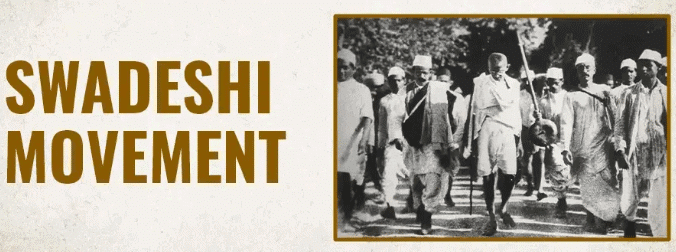
- The Swadeshi Movement aimed to oppose British rule and promote Self-help and local enterprises, National education, Use of Indian languages.
- To achieve swaraj (self-rule), radicals called for Mass mobilisation, Boycotting British institutions and goods.
- Some suggested that revolutionary violence might be necessary to overthrow British control. The movement was particularly strong in Bengal and inspired similar efforts in other regions, such as the Vandemataram Movement in Andhra.
Q11. Who were the revolutionaries?
Ans: The revolutionaries were a group of individuals who believed that violence was essential for achieving major changes in society and for ending British rule. They aimed to:
- Overthrow British authority through direct action.
- Encourage mass mobilisation against colonial rule.
- Promote the use of Indian languages and self-help initiatives.
Q12. When was the Muslim league formed and what were its demands?
Ans: A group of Muslim landlords and Nawabs established the All India Muslim League in Dacca in 1906. The League had several important demands:
- Support for the partition of Bengal.
- Separate electorates for Muslims, accepted by the government in 1906.
- Reservation of seats in councils for Muslims, elected by Muslim voters.
Q13. How did the Ist World War affect the economical condition of India?
Ans: The First World War had a profound effect on India's economy and politics: 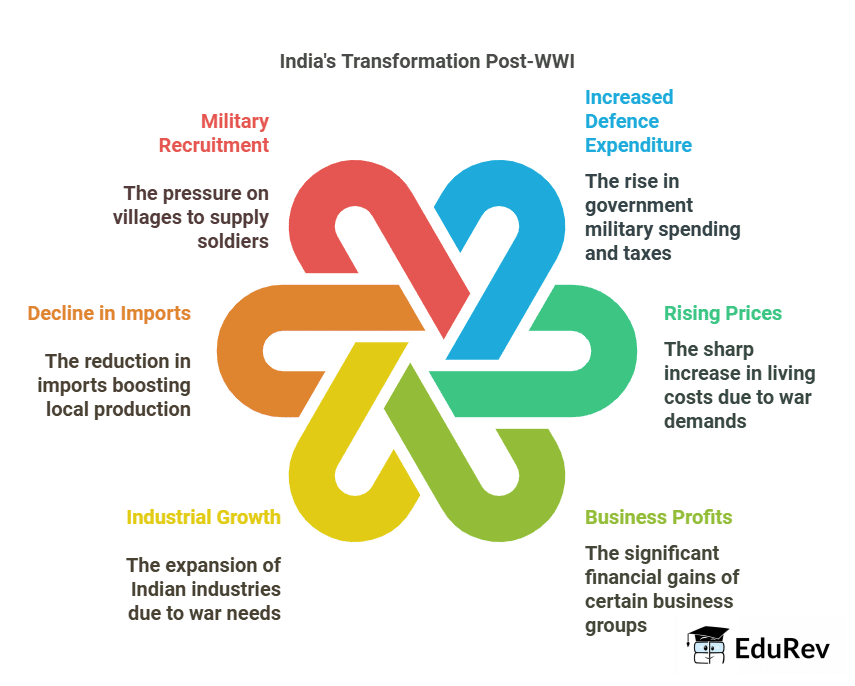
- Increased Defence Expenditure: The Government of India raised its defence spending, resulting in higher taxes on individual incomes and business profits.
- Rising Prices: Military demands led to a sharp increase in prices, causing hardship for ordinary people.
- Business Profits: While many struggled, business groups profited significantly from the war.
- Industrial Growth: The war created a demand for industrial goods such as jute bags, cloth, and rails, leading to the expansion of Indian industries.
- Decline in Imports: There was a reduction in imports, which further boosted local industries.
- Military Recruitment: The British expanded their army, pressuring villages to supply soldiers for the war effort.
Q14. What was Rowlatt Act?
Ans: The Rowlatt Act was enacted by the British in 1919, allowing the arrest of any Indian without a trial. This law severely limited fundamental rights, including the freedom of expression, and increased police powers.
- It was viewed as a violation of basic freedoms by leaders such as Mahatma Gandhi and Mohammad Ali Jinnah.
- Gandhi labelled the Act as "devilish" and called for a day of non-violent protest on 6 April 1919.
- Protests led to the formation of Satyagraha Sabhas to rally support against the Act.
- The Rowlatt Satyagraha marked the first all-India struggle against British rule, mainly in urban areas.
- Demonstrations were met with severe government repression, notably the Jallianwala Bagh massacre.
Q15. Why did the nationalist leader oppose Rowlett Act?
Ans: Mahatma Gandhi, Mohammad Ali Jinnah, and other leaders opposed the Rowlatt Act for several reasons:
- They believed the government had no right to limit people's basic freedoms.
- The Act was seen as tyrannical and unjust.
- Gandhi called for a day of non-violent protest on 6 April 1919, urging people to observe it as a day of humiliation and prayer.
- He established Satyagraha Sabhas to mobilise support against the Act.
Q16. What were the effects of the Jallianwala Bagh massacre?
Ans: The Jallianwala Bagh massacre had significant effects on India's fight for independence:
- Rabindranath Tagore renounced his knighthood, expressing national pain and anger.
- The massacre intensified the Rowlatt Satyagraha, uniting Hindus and Muslims against British rule.
- Mahatma Gandhi called for unity among all communities in India to fight for justice.
- Public demonstrations and strikes, known as hartals, erupted nationwide, facing brutal government suppression.
- The incident sparked widespread outrage, encouraging many to join the independence movement.
Q17. When was Non –Cooperation & Khilafat Movement launched?
Ans: In 1920, the Non-Cooperation Movement and the Khilafat Movement were launched in India. This was a reaction to the British government's harsh treaty imposed on the Turkish Sultan, or Khalifa, which angered many.
- The treaty upset people, similar to the outrage over the Jallianwala massacre.
- Indian Muslims wanted the Khalifa to maintain control over sacred places in the former Ottoman Empire.
- Leaders like Mohammad Ali and Shaukat Ali called for a full Non-Cooperation Movement.
- Gandhi supported their call, urging the Congress to address the injustices of the time.
The Non-Cooperation Movement gained momentum throughout 1921-22:
- Thousands of students left government schools and colleges.
- Many lawyers, including notable figures, gave up their practices.
- Nationalist leaders surrendered British titles in protest.
Q18. Why did Mahatma Gandhi organize a ‘dandi march’?
Ans: Mahatma Gandhi organised the Dandi March in 1930 to protest against the salt law, which allowed the government to control salt production and sales. He viewed the taxation of salt, a basic food item, as unfair.
The key objectives of the march included:
- Linking the widespread desire for freedom to a specific issue that impacted everyone, thus uniting both the rich and the poor.
- Walking over 240 miles from Sabarmati to Dandi, where they broke the law by collecting natural salt from the shore and boiling seawater.
- Demonstrating civil disobedience as a crucial step towards Purna Swaraj (complete independence).
Q19. How did the British expand its army during the War period?
Ans: During the war, the British expanded their army through several means:
- Villages were pressured to provide soldiers for a foreign cause.
- A significant number of soldiers were sent overseas to fight.
- Many returning soldiers gained insight into how imperialist powers exploited people in Asia and Africa.
- This experience fostered a desire to oppose colonial rule in India.
Q20. What were the demands of the Muslim league in 1946?
Ans: In 1940, the Muslim League passed a resolution demanding independent states for Muslims in the north-western and eastern regions of India. This resolution did not explicitly mention partition or the creation of Pakistan.
Key points regarding the League's demands in 1946 include:
- From the late 1930s, the League began to view Muslims as a separate nation distinct from Hindus.
- This shift was influenced by historical tensions between Hindu and Muslim groups during the 1920s and 1930s.
- The League's perception of Muslims as a minority led to fears of political marginalisation.
- In 1946, the League continued to push for Pakistan amid rising tensions and political negotiations.
|
69 videos|431 docs|46 tests
|
FAQs on Class 8 History Chapter 8 Important Question Answers - The Making of National Movement : 1870s-1947
| 1. What were the key factors that led to the emergence of the national movement in India during the 1870s? |  |
| 2. How did the Indian National Congress contribute to the national movement from its formation in 1885? |  |
| 3. What role did the British policies play in shaping the national movement in India? |  |
| 4. How did the participation of women influence the national movement in India? |  |
| 5. What were the main events of the Quit India Movement of 1942, and what impact did it have on the national struggle? |  |

















